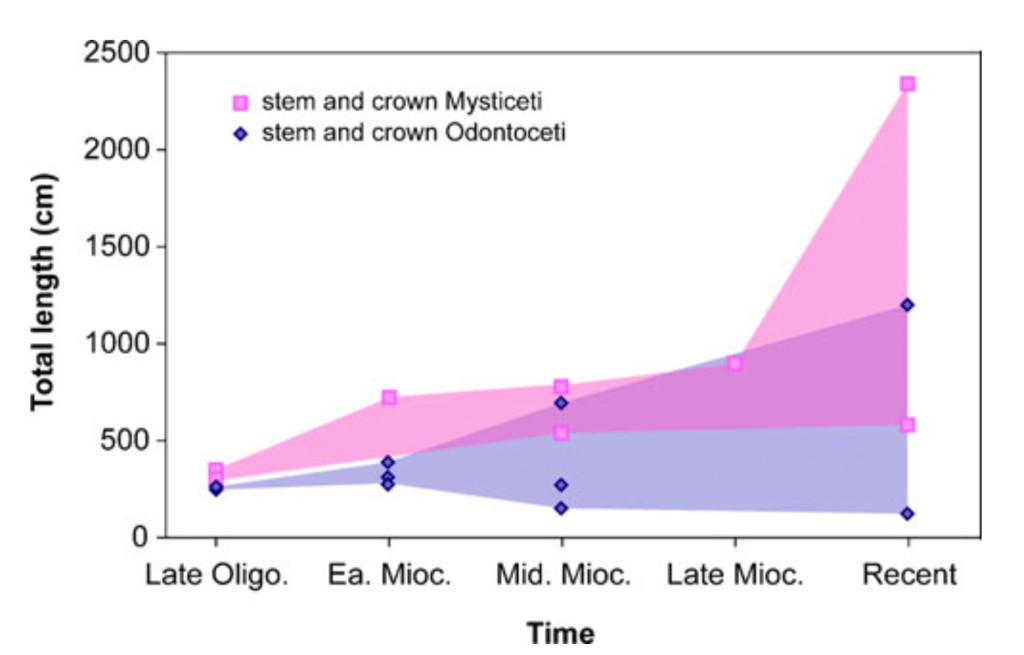How big were ancient whales?
Body size is perhaps the most obvious functionally important feature of an organism, yet it is complexly determined by many genes and environmental factors. Understanding body size trends through time and correlations with evolutionary transitions and ecology can give insight into characteristics of the process of evolution itself. Body size has particularly important implications for the biomechanics and ecological role of an organism. Whales (Cetacea) are a model group for studying body size evolution given the extreme gigantism found in extant taxa and its hypothesized link with feeding-strategy and behavior. Dr. Sponberg collaborated with Dr. Nicholas Pyenson, Curator of Fossil Marine Mammals at the Smithsonian, to address these questions using evolutionary comparative methods in conjunction with his extensive specimen-based research program (visit him here!)

Whale molecular phylogenies from May-Collado and Angarsson (2006) and Sasaki et. al. (2006). Reconstructing fossil whale body size is can be accomplished with greater accuracy by placing the fossil in a phylogeny because we can leverage our predictions of body size for common ancestors of extant whales.
Prior to investigating links between ecology, morphology and biomechanics, we must first understand what patterns we observe in whale body size evolution through time. We are using phylogenetic reconstruction methods to predict fossil cetacean taxa body length and reconstruct the evolutionary progression in body size. A classic approach to this challenge would be to take a single measurement of some linear parameter of the skull, which is well sampled in extant and fossil taxa, and regress that in a power law against body size. However, due to differential responses of skull and body length to selection through time, there will be limits on the ability of a single morphological character to predict body length. We address this in two ways. First, we take a multivariate regression approach to determine if additional morphological predictors can tighten our reconstructions of total body length. Second, recent studies have demonstrated that the incorporation of phylogeny into allometric relationships can significantly impact the resulting scaling coefficients. While the use of independent contrasts (IC) or general linear models (GLM) satisfies the uncorrelated error (independent sample) assumptions of regression, they generally increase the relative confidence interval of the statistical relationship. However, reconstructing fossil body lengths with a regression model requires a prediction interval, not a confidence interval, around predicted values. Garland and Ives (2000, Am Nat.), pointed out that the prediction interval around an interpolated value depends on the placement of that taxon within the phylogenetic tree. Since that taxon can potentially share a large degree of common history with other taxa, the prediction interval resulting from an IC or GLM approach can be much tighter than when using species data alone. Incorporating phylogeny can actually improve our confidence in reconstructing body sizes. Using an extensive collection of extant and fossil cetacean specimens, we have reconstructed body size estimates of early cetacean taxa and quantifying the relative confidence imparted by multivariate and comparative methods. We use the few fossil specimens where reliable total length estimates are available to test our reconstruction methods.

